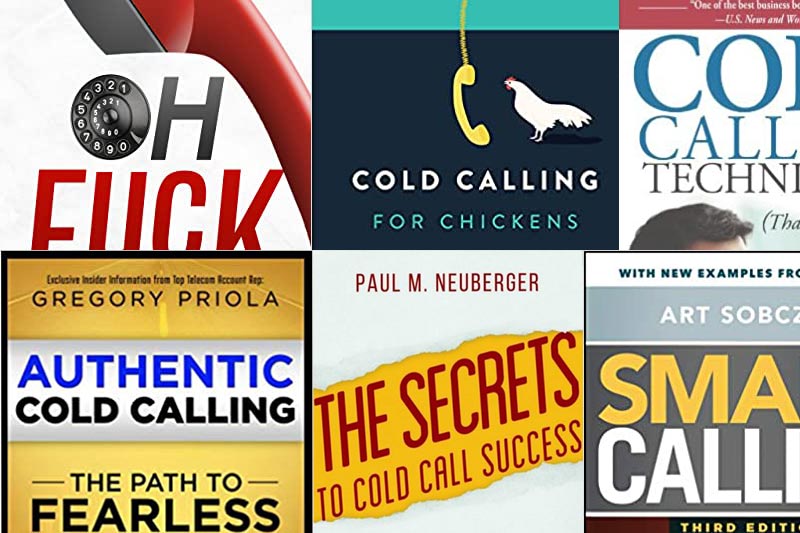
10 Best Cold Calling Books of 2024: Key Techniques & Strategies
Cold Calling is not dead! Despite what you might be hearing in some trending podcast or from your sales team, cold calling is more alive and more profitable today than ever before. There are some thought leaders who disguise the term cold calling with ‘warm calling’. In short, they’re associating the use of high-quality business intelligence as warming a cold

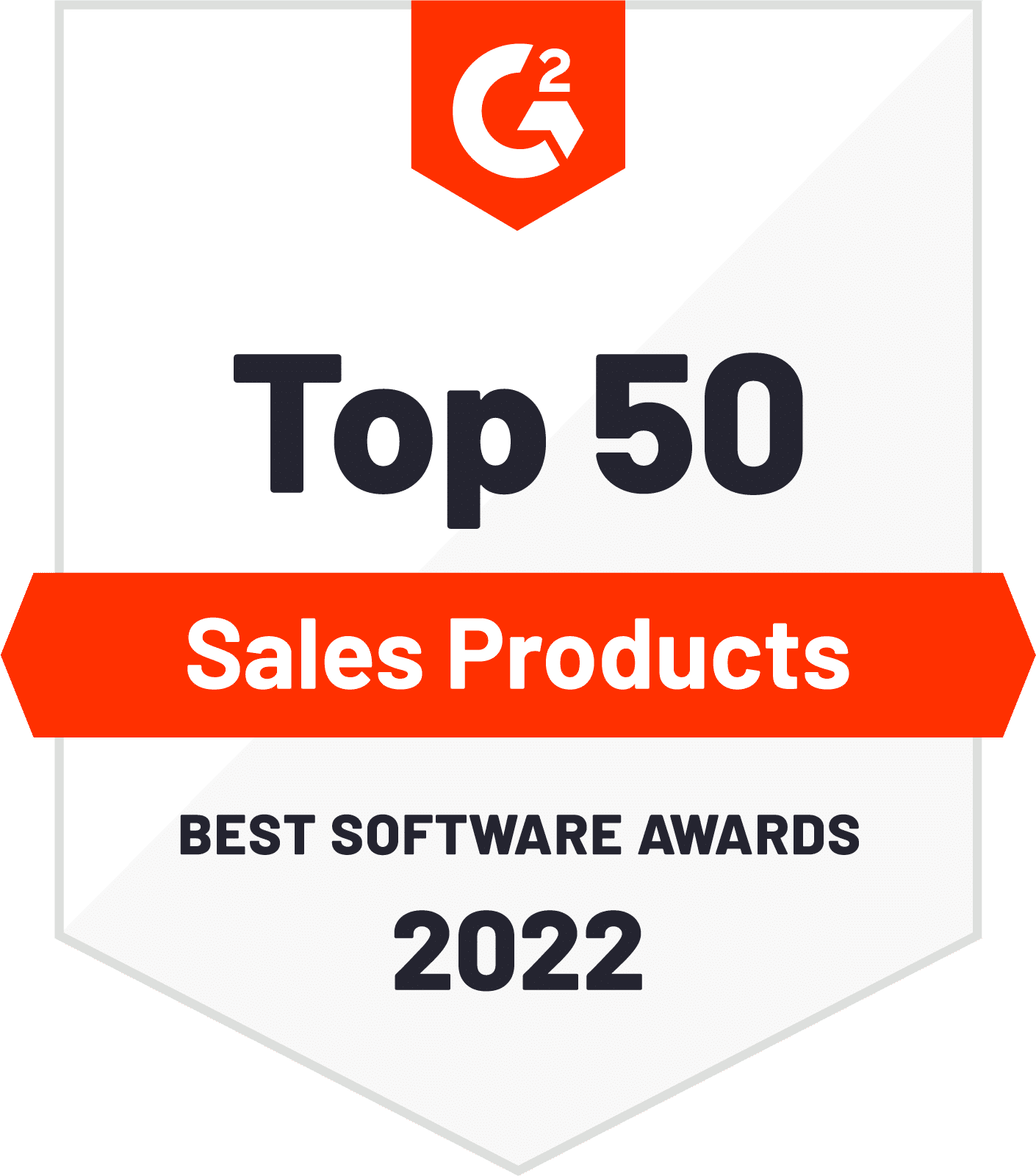
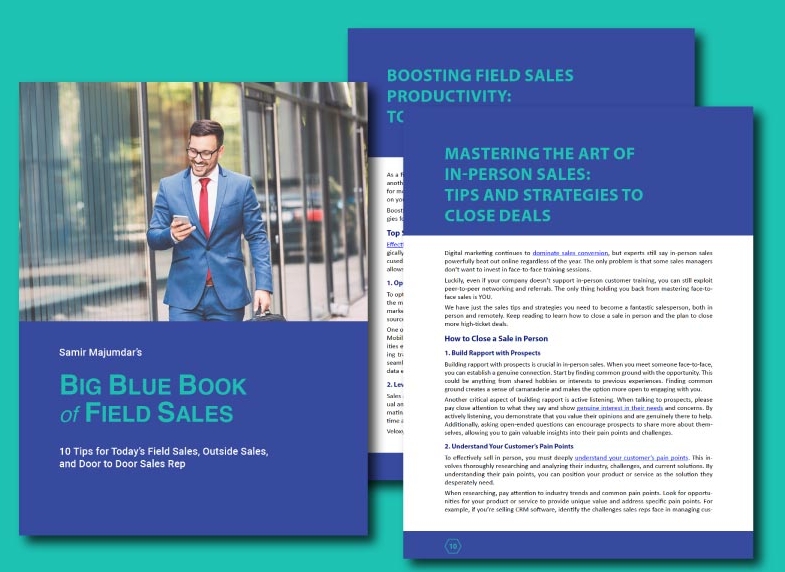




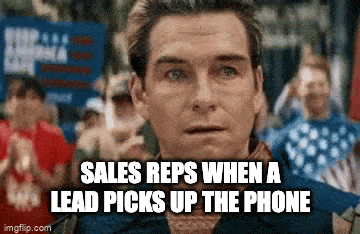
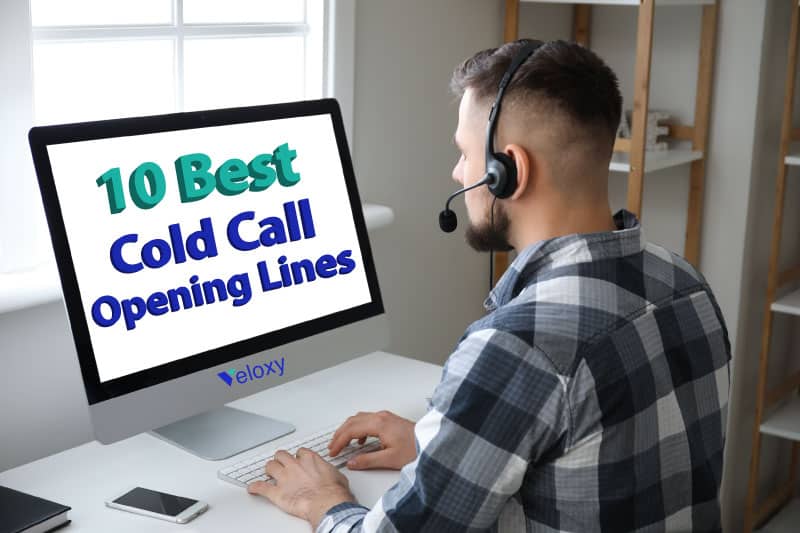







If you want to learn cold calling, you’ve come to the right place.
Despite the prevalence of overflowing email inboxes, cold calls remain a popular way to start sales conversations. However, many struggle to make the necessary number of calls to improve their chances of booking meetings.
A recent study found that B2B tech sales reps should aim for 60 calls per day but are only managing 35. (If you’re having the same problem, reach out to me for a free workshop.)
In this guide, we’ll cover everything you need to know about effective cold calling. From understanding the complexities of sales calls to delivering personalized and consultative experiences, we’ll show you how to become your customer’s trusted advisor over the phone.
Let’s get started.
What is Cold Calling?
Cold calling is the practice of reaching out to potential customers over the phone with the ultimate goal of scheduling a meeting or selling them a product or service.
In a nutshell, you’re calling someone who has never heard from you before.
While it’s often associated with frustration and resistance from both the caller and the recipient, cold calling remains an effective way to connect with potential customers.
In fact, 82% of buyers have accepted a meeting with a cold-calling salesperson as a result of their very first call.
Keep this mind: The approach to cold calling has evolved over the years.
Rather than simply dialing a number at random, successful cold calling now involves strategic research and planning to identify ideal prospects and tailor the approach to their specific needs and interests.
By taking the time to research and understand your target audience, you can increase the likelihood of success and minimize the negative perceptions often associated with cold calling.
What are the Statistics of Cold Calling?
Here are some eye-catching statistics on cold calls:
Want a statistic that you’ll only find here?
In our 7 years of cold call training, we’ve found that you should neve cold call before 2pm on Mondays and after 2pm on Friday. We’re human. We need time to ramp up and we often check out early near the weekend.
Keep reading for more reassurance on the effectiveness of this sales tactic.
Is Cold Calling Dead?
While some may argue that cold calling is dead, the truth is that no form of generating sales is ever truly dead. Cold calling remains a valid option for many businesses, but the question should be, IS IT RIGHT FOR YOU?
To be successful in cold calling, you need to have a passion for continual improvement and constantly adopt new call strategies relevant to your target market and ideal customer.
Tactics from the ’80s won’t cut it.
Today, CRM software like Salesforce and cold outreach technology such as auto dialers, lead prioritization, and cold email marketing can improve your connection and response rates.
Successful sales calls typically take around six minutes (if they pick up), and depending on your role in the sales org, you could make anywhere from 45 to 200 calls in a workday. With the right strategy and tactics, this time on the phone can be more productive and refined.
Buyers today have more tools at their disposal, and cold calling is only truly “cold” if your prospect has no knowledge of your brand or product. However, if your marketing efforts are effective, this is unlikely to be the case.
So, is cold calling dead? No, it’s alive and can be your next competitive advantage! Always remember to focus on helping your customers first, and closing deals second.
How to Take the Cold Out of Cold Calling
Cold calling is a challenge that every sales professional faces. But what if we told you there were other options?
Warm and hot calls offer a refreshing change from the traditional cold call.
A hot call involves using non-voice outreach channels to establish initial contact with a prospect before calling. It can also refer to initial phone outreach with a prospective customer who has demonstrated interest in receiving sales calls.
Warm calls, on the other hand, involve reaching out to contacts who have had previous correspondence with your company or any well-informed phone outreach led by sales intelligence.
While warm calls aren’t the polar opposite of cold calls, they are well-received by prospects, leads, and customers alike. Warm calls are the most trending since the onset of the pandemic, as familiarity has been a good path to success.
Hot and warm calls offer several advantages over cold calls, such as higher success rates, better data quality, and lower turnover rates. It’s time for sales teams to review the pros and cons of cold calling, warm calling, and hot calling, as these tactics can be the key to boosting sales and increasing customer engagement.
In my opinion, you should be making cold, warm, and hot calls. Just make sure you’re always starting with cold calls.
12 Tips to Master Cold Calls
Cold calling is not just about knowing how to work the phone and being good with people.
It truly starts with demonstrating your knowledge of the following:
This is where cold calling has changed in recent years. Where it used to be driven by “Sell, Sell, Sell!”, it’s now driven by, “Help, Help, Help!”
How can YOU, not just your product or service, solve the customer’s problem time and time again? Positioning yourself as a trusted advisor to someone who doesn’t know you will be a breath of fresh air for buyers.
It can be overwhelming when you’re trying to figure out which is the right strategy for which prospect.
To make life easier for you as a sales professional, here are 12 tips to help you master the art of cold calling:
Want to simplify cold calling for your reps? Schedule a free workshop now!
1. Do Your Research
Before you get started anywhere, you need to understand your prospects better.
There is no shortage of online resources for you to leverage. ZoomInfo, 6Sense, and Crunchbase can offer you glimpses behind every company’s curtain.
Look at their revenue, recent promotions and new hires, breaking news, and their 2nd degree LinkedIn connections. Plus, theorize how your product can solve their problem(s).
Here’s another idea that works 10 times out of 10!
Send a survey to all of your prospects. Incentivize them by entering their name into a contest, inviting them to a webinar that will review the findings, and delivering a free report that shares the takeaways. Reciprocity and curiosity are great tools to improve cold calling efforts. Not only will you better understand your prospects, but you’ll also convert prospects into SQLs!
How to Get Phone Numbers for Cold Calling?
Getting phone numbers for cold calling requires a bit of research and some helpful tools. One way to get phone numbers is through company websites or LinkedIn profiles.
Another way is to use sales prospecting software such as:
These services can also provide additional data like email addresses and job titles. However, it’s important to note that some of these services can be costly, so it’s important to weigh the costs versus the potential benefits before investing.
2. Work on Your Script
Using the right script for different prospects can mean the difference between success and failure. What you’re after here is to avoid being caught off guard or “sounding cold“.
Know what you’re going to say and how you’re going to say it—every time.
While most of you will open a word document to write a script, consider choosing your computer or smartphone recorder. Some of the best scripts come from improvisation.
You’ve done all the research, you know your customer, now trust in yourself to come up with the right talking points while also sounding confident, captivating, and authentic.
With the introduction of video calls due to Covid, improving your pitch and presentation over a screen can only help your conversion rates.
Click here to jump ahead & get your new cold call script templates!
3. Anticipate Objections
By anticipating what your prospect might object to, you can be prepared with a legitimate answer each and every time.
Ultimately, you’re after getting an appointment to showcase your product or service, and to go into more detail. So really, your best way to anticipate objections is to have a reason why they should give you time on their calendar.
Here’s a helpful tip. When you’re making calls, always have a spreadsheet open to record the objections you hear. Keep a tally of the most popular ones. Sit back and contemplate how you can pivot and respond to each objections. Share them with the marketing team to initiate new content.
Collaborative efforts like these are trending in the highest-performing sales organizations.
4. Be Positive, Start Calling
This step is all about believing in yourself and believing in what you are selling.
Attitude can make or break your sales call efforts, so make sure that you go in with a good one. Be absolutely confident in the value that you can add to your prospect’s business.
How can you build your confidence in cold calling?
In addition to the aforementioned video recording tip, expand your cold outreach to social media. By sharing helpful, consultative content and comments in the same LinkedIn groups or hashtag feeds you find your customers, you’ll develop a positive reputation while achieving likes, connection requests, and direct messages—thereby boosting your dopamine and serotonin levels.
QUICK TIP: Visit each prospect’s LinkedIn profile after each cold call. Once they’re alerted of your profile view, their curiosity will drive them to your profile and helpful content.
Another way to build confidence is to practice with a friend or colleague. Role-playing cold calls can be a helpful exercise in developing your pitch, anticipating objections, and feeling more comfortable on the phone.
5. Be Prepared to Leave a Message
Leaving a message shouldn’t be a long, winding one-sided conversation about what you’re selling. Keep it simple. Stick to a brief introduction on who you are, why you’re calling, and some information on when you intend to call back.
Here’s a helpful script for leaving a voicemail:
“Hello FIRSTNAME, this is YOU from COMPANY, please give me a call back at PHONENUMBER, again this is YOU from COMPANY, PHONENUMBER. Thank you.”
Sounds too simple, right? Curiosity will drive response rates on this voicemail through the roof—trust me!
If you stumble into a gatekeeper the next time you call, don’t simply mention that you’ve sent the decision maker an email or phoned them—be specific. Share how you sent the decision maker a report to help them with their pain point and you wanted to know their thoughts.
Or, if you have access to the company’s Org chart, specify someone just below the person you are calling to demonstrate familiarity with the organization.
Click here to jump ahead & get your new cold voice mail script templates!
6. Handle the Gatekeeper
Gatekeepers, whether they are receptionists, administrative assistants, or executive assistants, are there to protect their boss’s time. They’re very good at deflecting unwanted calls, so you’ll need to be creative to get through to the decision-maker (aka their boss).
Be friendly, respectful, and professional. They’re used to people talking down to them or demanding things. Remember, you’re not trying to get past the gatekeeper, but to build a relationship with them.
If you’re calling a larger organization, do your research beforehand and find out who the gatekeeper is. Address them by name and be specific about why you’re calling. For example, “Hi Sarah, I’m calling because I recently sent a report on sales operations to John, and I was hoping to get his thoughts on it.”
7. Follow Up
Following up is critical in sales. It can take several touchpoints to convert a prospect into a customer, so don’t be discouraged if you don’t get an immediate response.
Be persistent but not pushy. If you’ve left a voicemail, wait a few days and then try calling again. If you’ve sent an email, follow up with a phone call or another email.
Make sure to keep track of your interactions with each prospect, so you can personalize your follow-up and avoid redundancy. If this drains too much time, consider using a lead prioritization tool that creates a call list based on buyer signals.
Another way to follow up is to use social media to connect with prospects. You can send a personalized message on LinkedIn or Twitter, or engage with their content to stay on their radar.
8. Provide Value
When making a cold call, you want to provide value to the person on the other end of the line.
Offering something that they will find useful and relevant to their needs is key to building a successful relationship. This could be anything from sharing your expertise to providing resources that can help them look good to their superiors.
By providing value, you demonstrate that you’re not just trying to make a sale but are genuinely interested in helping them. This can make a HUGE difference in how they perceive you and increase the likelihood of future business interactions.
Remember that the value you offer should be relevant and helpful to the person you’re calling, so do your research beforehand to ensure that you understand their needs and challenges.
9. Listen Actively
Listening is a crucial aspect of effective communication.
When making cold calls, it’s important to give your full attention to the other person and show a genuine interest in their perspective. Active listening involves asking thoughtful questions, clarifying information, and acknowledging their concerns.
Plus, don’t forget to complement their point of view. Flattery works every time.
“That’s an interesting perspective FIRSTNAME, I’ve never thought of it that way. I’m going to write that one down. Thank you.“
This not only helps build rapport but also helps you discover valuable insights into their needs and challenges. By actively listening, you can better tailor your message and offer solutions that are more relevant to their specific situation.
10. Be Authentic
When making cold calls, it’s important to be true to yourself.
Don’t pretend to be someone you’re not or exaggerate your qualifications to impress the other person. Instead, let your personality shine through and be genuine.
This will help establish trust and credibility, which are essential for building successful relationships.
Remember, people can detect insincerity, so it’s important to approach the call with honesty and authenticity. By being yourself, you will not only establish a stronger connection with the other person but also increase the chances of a positive outcome.
11. It's a Numbers Game
Cold calling success is partly a numbers game, but there’s more to it than just hundreds of dials.
While calling 100 prospects may only result in 5 meetings, success rates vary by industry and it’s difficult to create a reliable benchmark. Instead, start with a calling plan and use the first 100 prospects as a benchmark to share with your colleagues.
To improve your cold calling skills, follow the ABC rule: Always Be Calling. Set a calling schedule and stick to it to start the snowball effect of more appointments.
When it comes to the number of calls to make in a day, some reps suggest 60 calls while others measure by the three-hour rule. Keep in mind that research and administration also take up a salesperson’s day (unless you’re using sales automation, that is).
On average, it takes 5-6 cold calls to convert a first-time receiver to a meeting. However, with cold emails, if you’ve sent more than four without a response, your chances of conversion decrease. Keep trying and don’t give up!
12. Use Sales Technology to Optimize Calls
With the advancements in technology, you now have access to a wide range of sales engagement tools and artificial intelligence that can help optimize your sales performance.
To make the most of cold calling, take advantage of sales software that doubles as a calling calendar and CRM tool. This will enable you to store important customer and prospect data, track your progress, and easily assign the right follow up.
Cold calling software, such as Myphoner and Toky, can help you manage your leads and track your sales activity to improve your performance. Quick Dialer by Veloxy is another helpful tool that can simplify your phone outreach processes, allowing you to start more profitable conversations in a fraction of the time.
When choosing a software option, make sure it integrates seamlessly with your existing systems, such as Salesforce, and is user-friendly for your field sales reps. With the right technology, you can optimize your cold calling strategy and improve your chances of success.
Want to cold call at the speed of light? Schedule a demo by clicking here.
How to Craft the Perfect Cold Call Scripts
Want to know the secret behind the best cold calling scripts?
It’s simple: preparation.
The most successful cold callers are the ones armed with information about their prospects.
To create effective cold calling scripts, you need to dig deep and gather essential information before picking up the phone.
This process, also known as prospecting, involves building a profile of your potential customers. It includes gathering basic company details such as executive names, industry, products, and competition. Additionally, take time to research the content they post online, events they host, LinkedIn pages, press releases, and customer reviews to identify their pain points and challenges.
By investing time in this research phase, you can create a comprehensive list of information that will help you craft an amazing cold calling script. This information can make the difference between a mediocre call and a successful call.
So, make sure to prioritize your prospecting efforts and be well-prepared before making any cold calls.
Now we’ll take a look at some of the best cold call script templates:
B2B Cold Calling Script
Cold calling in the B2B space is a unique challenge that requires a certain level of finesse and preparation. In this section, we’ll provide you with an updated B2B cold calling script that’s sure to generate results.
1. Start with a Strong Introduction
The first step in any cold call is to establish rapport with the prospect. Start by introducing yourself and your company, and then ask how they’re doing. Here’s an example:
“Good morning, this is (your name) from (your company). How are you today?”
2. Make Your Pitch Clear, Concise, and Easy to Remember
When it comes to pitching your product or service, remember to keep it clear, concise, and easy to remember. Make sure you adapt your pitch for each client, and don’t feel like you have to share every detail of your product in the first 30 seconds. Here’s an example:
“(Your company) provides interactive software specifically designed for the B2B industry that helps companies like yours build and manage an effective sales database.”
3. Ask Open-Ended Questions
The next step in your B2B cold calling script is to ask open-ended questions that can help you identify pain points and challenges your prospect may be facing. Here are a few examples:
4. Engage in Conversation
Once you’ve asked your open-ended questions, it’s time to engage in conversation with your prospect. Be sure to use pauses and mirroring (repeating what the prospect said) as tactics for establishing rapport. Here’s an example:
Prospect: “Actually, our sales team manages their own database and lead generation in isolation.”
You: “So, you’re saying that your sales team operates in isolation when it comes to lead generation and database management?”
By mirroring, it allows you to share a similar case study, thereby hooking the prospect and establishing credibility.
5. Close the Call
Finally, it’s time to close the call and schedule a meeting with your prospect. Remember to be courteous and respectful of their time. Here’s an example:
“So, (prospect’s name), I appreciate you taking the time to speak with me today. It would be great to come to your office and show you how our system works and what it can do for you. Do you have an open slot this week or next?”
As you close the call, ask if there’s anyone else they would like to include in the meeting request and make sure to repeat email addresses and spellings of names to respect accuracy.
Tech & IT Cold Calling Script
The thing about tech and IT buyers is they live and operate in isolation. These guys know their industry, they know their customers, they know the value that they add, and they always know their competition inside and out.
Before you even attempt to sell your tech or IT product to someone, you’ve got to make sure that you’ve got those same boxes checked. Tech and IT contacts buy from people like them.
1. Personalize Your Opening
Begin by addressing the prospect by name and introducing yourself and your company.
Then, add a personal touch by mentioning something specific about their company or recent activities that shows you’ve done your research. For example:
“Hi [prospect’s name], this is Joe from [your company name]. I noticed that [prospect’s company name] recently published a whitepaper on [subject], and I found it very insightful.”
2. Get Straight to the Point
Tech and IT buyers are busy people, and they don’t have time for small talk.
Once you’ve introduced yourself, let them know why you’re calling and how your product or service can help them. Be concise and specific. For example:
“We’ve identified your company as one that can benefit from our [product or service]. [Name drop some other clients here] have recently done the same. Our [product or service] can help you drive efficiency while ultimately saving you money, perhaps more so than the clients I shared.”
3. Highlight Your Unique Selling Proposition
Make sure to mention what makes your product or service stand out from the competition.
If your software saves time or money, emphasize that. For example:
“Our [product or service] is unique because it [insert your unique selling proposition]. This means that we can offer you a solution that is both efficient and cost-effective. In short, it will make you look really good to the C-suite.”
4. Listen to their Pain Points
Tech and IT buyers are experts in their field, and they know exactly what they need.
Take the time to listen to their pain points and concerns, and show them how your product or service can help. For example:
“I understand that [insert their pain point]. Our [product or service] can help you resolve this issue, and we have a number of satisfied clients who have experienced similar benefits.”
5. Book a Follow-up Appointment
Once you’ve explained how your product or service can help, try to book a follow-up appointment to discuss things further.
Suggest a time and date that works for both of you, and make sure to confirm it. For example:
“Would you be available to meet with one of our solution architects to demonstrate our product for you? We have availability later this week or early next week. Does [insert date and time] work for you?”
6. Address Objections
If the prospect expresses hesitation or objections, address them directly.
Be prepared to provide evidence of the benefits of your product or service, and reassure them you understand their concerns. For example:
“I understand that you may have some concerns, but our [product or service] has been specifically designed to address the challenges that you’re facing. We’re confident that we can provide you with a solution that meets your needs.”
7. Close the Deal
Once you’ve addressed their objections and concerns, try to close the deal by asking for their commitment.
Be confident and straightforward, and don’t be afraid to ask for what you want. For example:
“Based on what we’ve discussed, I believe that our [product or service] is the right solution for your needs. Can we count on your commitment to move forward with our solution?”
Remember, confidence is key when it comes to closing deals.
SaaS Cold Calling Script
To successfully sell a SaaS product over the phone, it’s crucial to tailor your cold calling approach based on the product you’re selling and the industry you’re targeting.
By customizing your pitch, you can increase your chances of closing a sale and building a lasting relationship with your prospects.
Whether you’re targeting a small business or a large enterprise, you need to be prepared to address their unique pain points and demonstrate how your SaaS solution can help solve their specific challenges. With the right approach and mindset, cold calling for SaaS can be an effective way to generate new leads and grow your business.
1. Define Your Ideal Customer
Before you start crafting your SaaS cold calling script, it’s crucial to define your ideal customer. This means understanding their needs, challenges, and goals.
By doing so, you’ll be able to tailor your script to resonate with them and offer a solution that addresses their specific pain points.
For instance, if you’re selling a CRM SaaS product, your ideal customer could be a small business owner looking to streamline their sales process and increase their customer base.
“I’m reaching out to business owners looking to optimize their sales process. Would an 200% increase in sales productivity be of interest to you?”
2. Focus on the Benefits
When crafting your SaaS cold calling script, avoid simply listing features and instead focus on the benefits your product offers.
What specific problem does your product solve, and how does it make your customer’s life easier or more efficient?
By emphasizing benefits rather than features, you’ll be able to connect with your prospect on a more personal level and highlight the value your product brings to their business.
“Our (SaaS product) allows you to automate your sales process and increase customer engagement like no other solution, leading to a greater increase in revenue and profitability.“
3. Make it Conversational
While it’s important to have structure and key talking points in your SaaS cold calling script, it’s equally important to make it sound natural and conversational.
Avoid sounding like a robot reading off a script and instead aim for a friendly, genuine tone. This will help build trust and rapport with your prospect and make them more likely to engage with you.
“FIRSTNAME, I noticed that you’re currently manually tracking your sales leads. Our (SaaS product) can help automate this process, saving you time and resources. Would you be interested in learning more?“
4. Offer a Free Trial
One way to increase the chances of converting your prospect into a customer is by offering a free trial of your SaaS product.
This allows them to test it out for themselves and see the value it brings to their business. When offering a free trial in your SaaS cold calling script, make sure to emphasize the benefits of trying it out and provide clear instructions on how to access it.
“We’d love for you to test our product and see its value firsthand. Would you be interested in a free trial and team workshop?”
5. Schedule a Follow-up Meeting
Even if your prospect isn’t ready to make a purchase during the cold call, it’s important to set up a follow-up meeting.
This shows your commitment to helping them and gives you another opportunity to pitch your product. When setting up the follow-up meeting, make sure to confirm a specific date and time that works for both parties, and provide a brief agenda of what will be discussed during the meeting.
“Great! Let’s schedule a follow-up meeting next week to discuss how our (SaaS product) can benefit your business further. How does Wednesday at 10 am sound?”
Can you tell that I own a SaaS product? And yes, I make my very own cold calls.
How to Craft a Captivating Opening Line
Crafting a captivating opening line is crucial for any cold call to be successful.
It’s the first impression that you’ll make on your prospect, and you want it to be a good one.
Here are some tips to help you create a memorable and engaging opening line:
Remember, your opening line sets the tone for the rest of the conversation, so make sure it’s engaging, relevant, and memorable.
Below are some tips on crafting opening lines based on buyer persona:
CEO Cold Call Opening Line
Getting past the gatekeeper and reaching the CEO is no easy feat, but it’s only half the battle. Once you finally get the opportunity to speak with the CEO, it’s all about how you kick off the conversation.
The opening line can make or break the entire call, as it sets the tone for the rest of the conversation. A poorly crafted opening line can lead to an immediate hang-up or the CEO losing interest, while a well-crafted one can capture their attention and keep them engaged.
In other words, the stakes are high, and the opening line needs to be compelling enough to convince the CEO to give you their valuable time.
Here are some tips to help you craft a captivating opening line that will leave a lasting impression on the CEO:
1. Start with a Compliment
CEOs are often busy and constantly bombarded with calls and emails.
By starting your call with a genuine compliment, you’ll instantly grab their attention and set yourself apart from the rest. For example, you could say something like:
“Hi (CEO’s name), I read your recent interview in (publication) and was really impressed by your insights on (topic).”
2. Use a Referral
Similar to the B2B and SaaS cold calling scripts, using a referral can be an effective way to catch the attention of a CEO. For example:
“Hi (CEO’s name), (referral name) suggested that we reach out to you. They mentioned you might be interested in hearing about our product that has helped similar companies like (competitor) improve their ROI.”
3. Create Urgency
Creating a sense of urgency can be a powerful motivator for CEOs. For example:
“Hi (CEO’s name), I noticed that your competitors have started using our product and are seeing significant growth. I wanted to reach out to you before they gain a competitive advantage.”
Decision Maker Cold Call Opening Line
Decision makers hold the keys to major purchasing decisions, and as a result, they’re inundated with sales pitches every day.
As a sales representative, you need to make sure your cold call stands out from the rest.
A captivating opening line can be the difference between a brief conversation and a successful sale. You need to grab their attention quickly and create a sense of intrigue.
To do that, you’ll need to research the prospect’s business and understand their challenges and pain points. By doing so, you’ll be able to craft an opening line that immediately resonates with them and sets you apart from other sales reps.
In this section, we’ll explore three unique tips to help you craft a captivating cold call opening line that engages decision makers and sets the stage for a successful conversation.
1. Start with a Personal Touch
Begin your call with a personalized greeting that includes their name and a brief reference to something you found in your research about their company or industry. For example:
“Hi (prospect’s name), I noticed that your company recently won an award for (achievement), congratulations! My name is (your name), and I’m calling from (company name).”
2. Ask a Thought-Provoking Question
Ask a question that gets them thinking about how they can improve their business. For instance:
“Are you finding it difficult to keep up with the changing trends in your industry?” or “How are you currently addressing (specific problem that your product/service solves)?”
This will show the decision-maker you’re knowledgeable about their industry and that you’re genuinely interested in helping them succeed.
3. Highlight Your Competitor Success
Mentioning how your company has helped similar professionals and competitors can create a sense of FOMO (fear of missing out) and pique their interest. For example:
“Good morning, (prospect’s name). I’m (your name) from (company name). We’ve recently helped (competitor’s company name) to (outcome). I’d love to chat with you about how we can help your company achieve similar results.”
Gatekeeper Cold Call Opening Line
One way to make a great impression on gatekeepers is by showing respect and empathy towards their role.
They are often the first point of contact for the company, and it’s essential to recognize their importance in the organization. With a well-crafted opening line, you can build a positive relationship with the gatekeeper and increase your chances of getting through to the decision-maker.
In this section, we’ll provide you with three unique tips to help you create an engaging cold call opening line for gatekeepers.
1. Begin with a Friendly Introduction
Make sure to use a warm and friendly tone when introducing yourself to the gatekeeper. This will help establish a positive first impression and put the gatekeeper at ease.
Remember that the gatekeeper is often the first point of contact with a company, so you want to make sure that you’re starting the conversation on the right foot. For example, you could say something like:
“Good morning! My name is [Your Name], and I hope you’re having a great day so far. I’m calling from [Your Company Name] and I was hoping to speak with [Decision Maker’s Name].”
2. Ask for their Help
Asking for their help can make the gatekeeper feel valued and involved in the conversation.
You can also try to build a relationship by asking them about their role or their experience working with the company. For example:
“How long have you been working with [Company Name]? I’ve heard great things about the work you do here.”
3. Offer Value
To make your offer even more compelling, consider using specific examples or success stories that demonstrate how your product or service has helped other companies similar to theirs.
But remember, the Gatekeeper may not have the same level of knowledge as the CEO or Decision Makers. You should understand this, but be careful you don’t insult the Gatekeeper either.
You could say something like:
“We recently worked with a company in your industry that was struggling with the same challenge. Our solution helped them save over $100,000 in costs in just the first year. What do you think about that?!”
How to Craft Responsive Voicemail Messages
Using voicemail as a touchpoint in your sales process can be an effective way to resonate with prospects and influence returned calls.
However, leaving a voicemail that captures the prospect’s attention and piques their interest requires more than just a sales pitch.
In this section, we’ll discuss five tips for crafting a captivating cold call voicemail message that increases your chances of getting a callback.
1. Plan and Practice
Before making a cold call, always have a plan in place for what you want to say if you reach their voicemail.
A well-prepared voicemail message can make the difference between getting a callback and being ignored. You should also keep your message short and to the point, aiming to keep it under 30 seconds.
By rehearsing your message, you’ll be more confident and natural-sounding, which can help to build trust with your prospect.
2. Focus on the Prospect, Not Your Product
A common mistake salespeople make when leaving voicemails is focusing solely on their product or service. This approach is likely to turn off the prospect and make them less likely to call you back. Instead, focus on the prospect and their needs.
Highlight how your product or service can help solve their pain points or achieve their goals.
3. Be Intriguing and Curious
When crafting your voicemail message, it’s essential to be intriguing and curious. Leave your prospect wanting more information by sharing a compelling fact or statistic related to their industry or pain point. For example:
“Did you know that businesses in your industry are losing ($$$) amount of revenue due to [specific pain point]? We’ve helped similar companies reduce those losses by (###%), and I believe we could do the same for you.”
4. Make it Personal
A personalized voicemail message can go a long way in building rapport with your prospect.
Start by addressing them by their name and referencing any specific details you know about them or their company. For example:
“Hi [prospect’s name], I noticed that your company recently launched a new product, and I think our services could help you reach your target market more effectively.”
5. End with a Clear Call to Action
Finally, end your voicemail message with a clear call to action.
Give the prospect a reason to call you back and make it easy for them to do so. For example:
“If you’re interested in learning how our product can help your business, please give me a call back at [your phone number]. I look forward to hearing from you soon.”
BONUS: Use the "Costanza" Vociemail Script
George Costanza was probably one of the most memorable characters to come out of the Seinfeld series, let alone any sitcom, and understandably so.
The idea of the Costanza voicemail is based on an episode where he left a lady’s apartment not without saying his last name with a slight jingle to it; “Cooooo-STAN-za!” She couldn’t get him out of her head, leading her to call him back and ask him out (after dumping him).
George was creating memorability and familiarity while establishing his own persona.
Ask your friends what makes you, YOU.
Now apply those answers to your B2B voicemails! Like I do here:
“(prospect’s name). Samir. I haven’t from you in awhile. Call me back when you have a minute, will you? (phone number). It’s (first name) *pause* (last name). Thank you.”
Okay, I may not be as memorable as George Costanza (I think that’s a good thing), but I always leave the prospect wanting to answer not my question, but my observation that they haven’t called me in awhile, planting the seed that THEY owe me a call.
Your recipient wants to hear credibility and positive energy from you, so be yourself.
Final Thoughts
Congratulations, you’ve made it to the end of our complete guide for cold calls!
We hope you found our tips and strategies helpful and that you feel more confident about picking up the phone and making those calls.
But remember, cold calling is an art that takes practice to perfect. So, if your sales team is ready to take their skills to the next level, why not schedule a cold call workshop with us?
Our workshops provide hands-on training and personalized coaching to help you master the art of cold calling and achieve your sales goals.
So don’t wait, schedule your workshop today and take your cold calling skills to new heights!